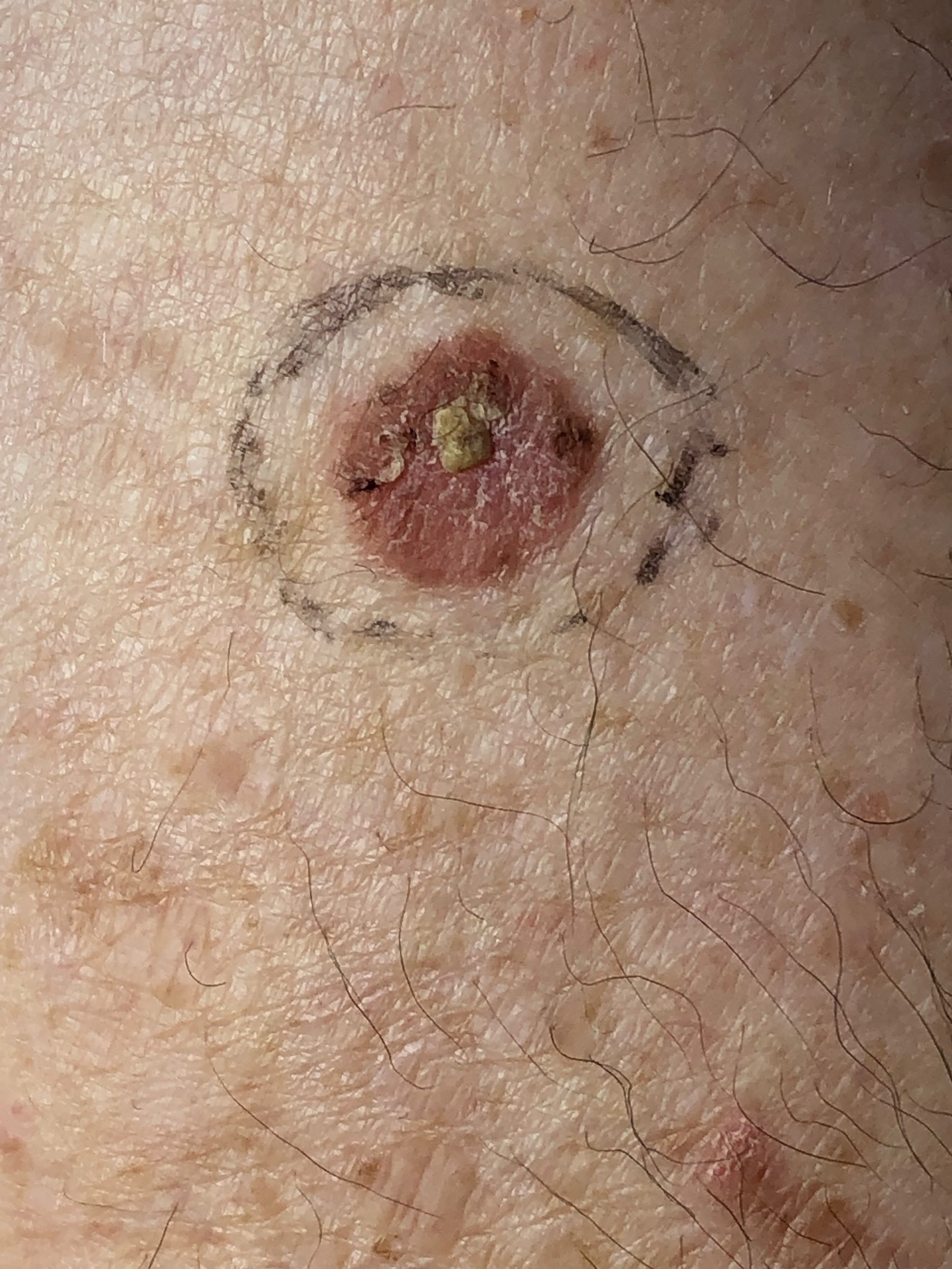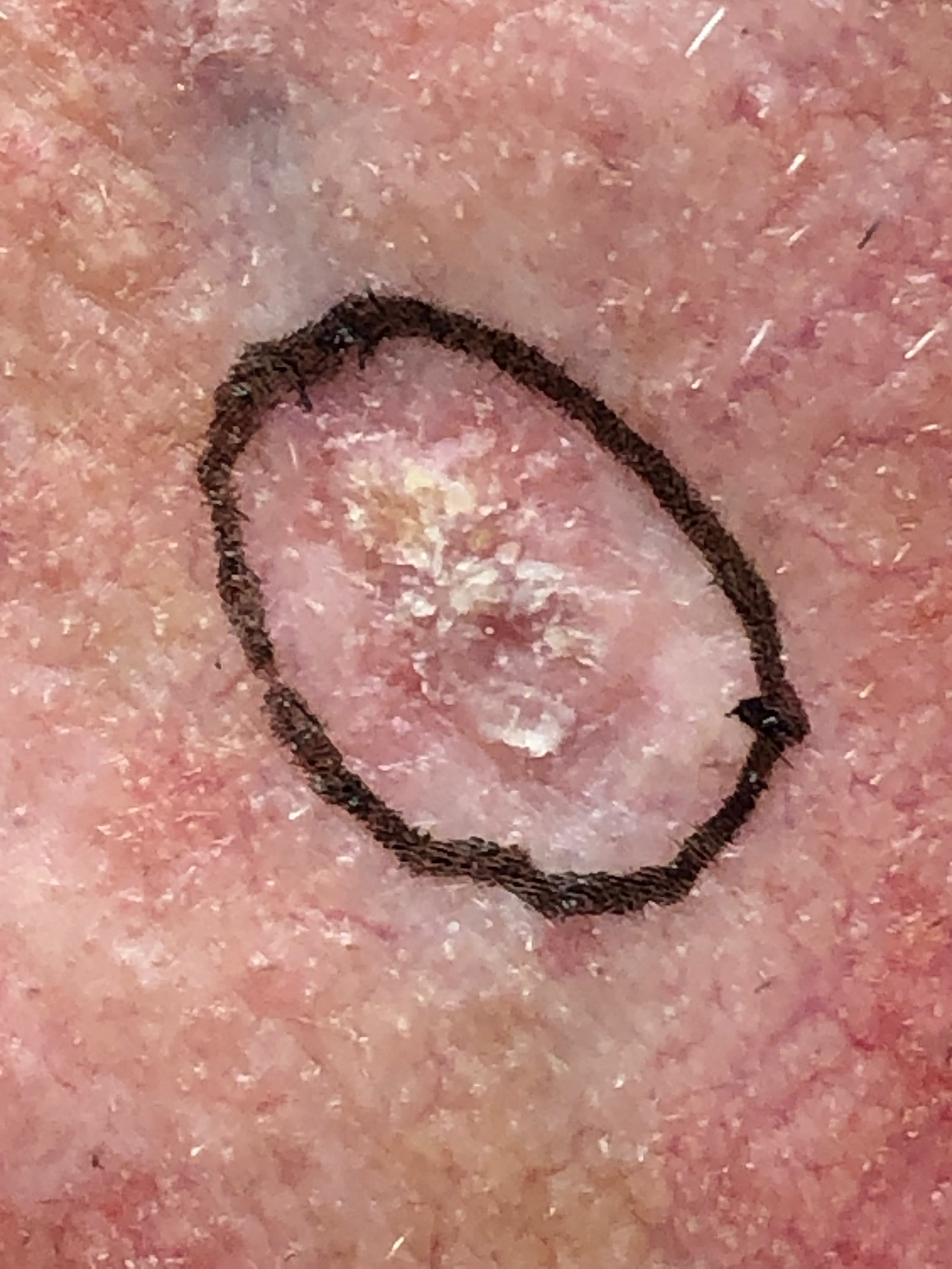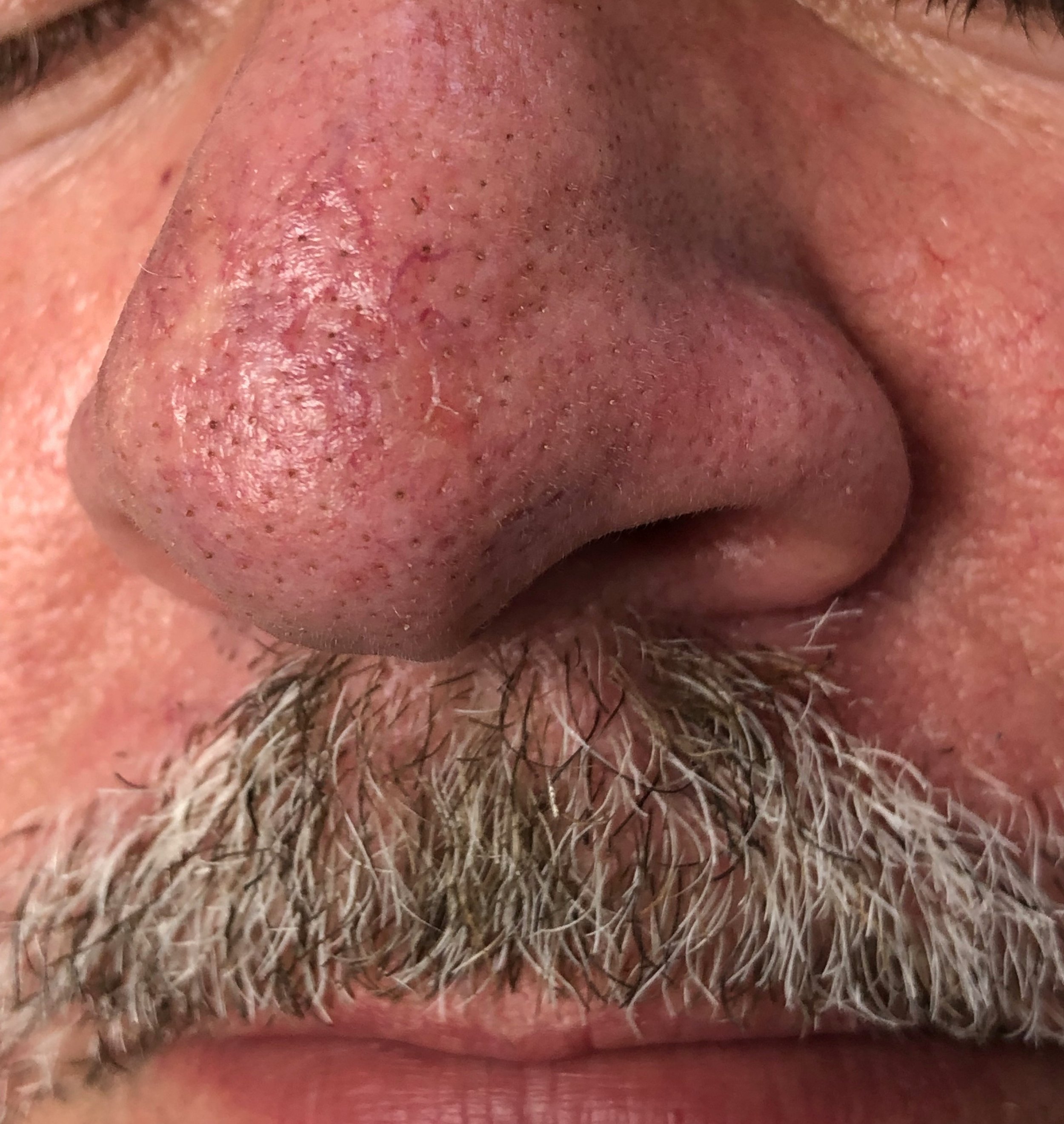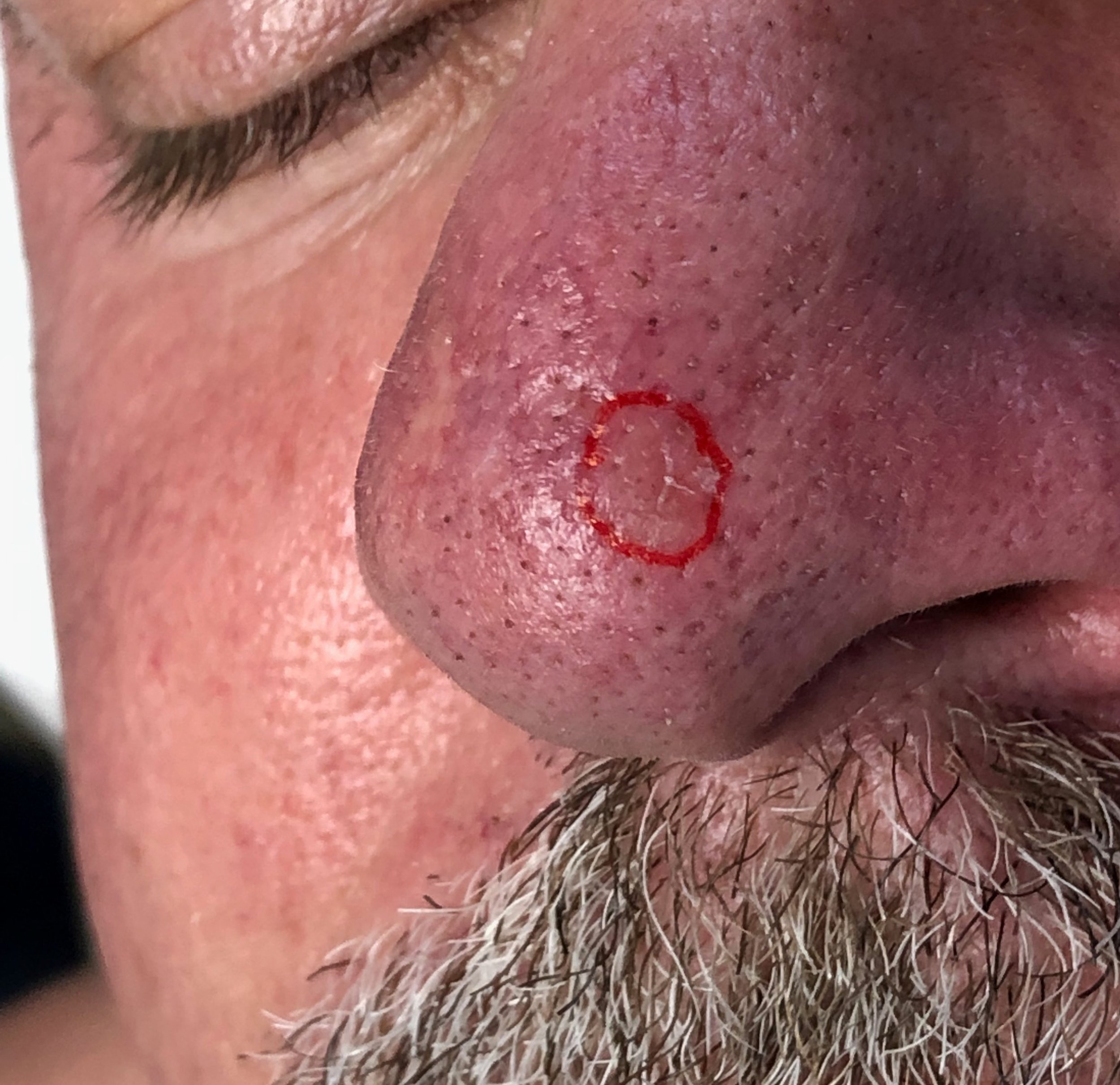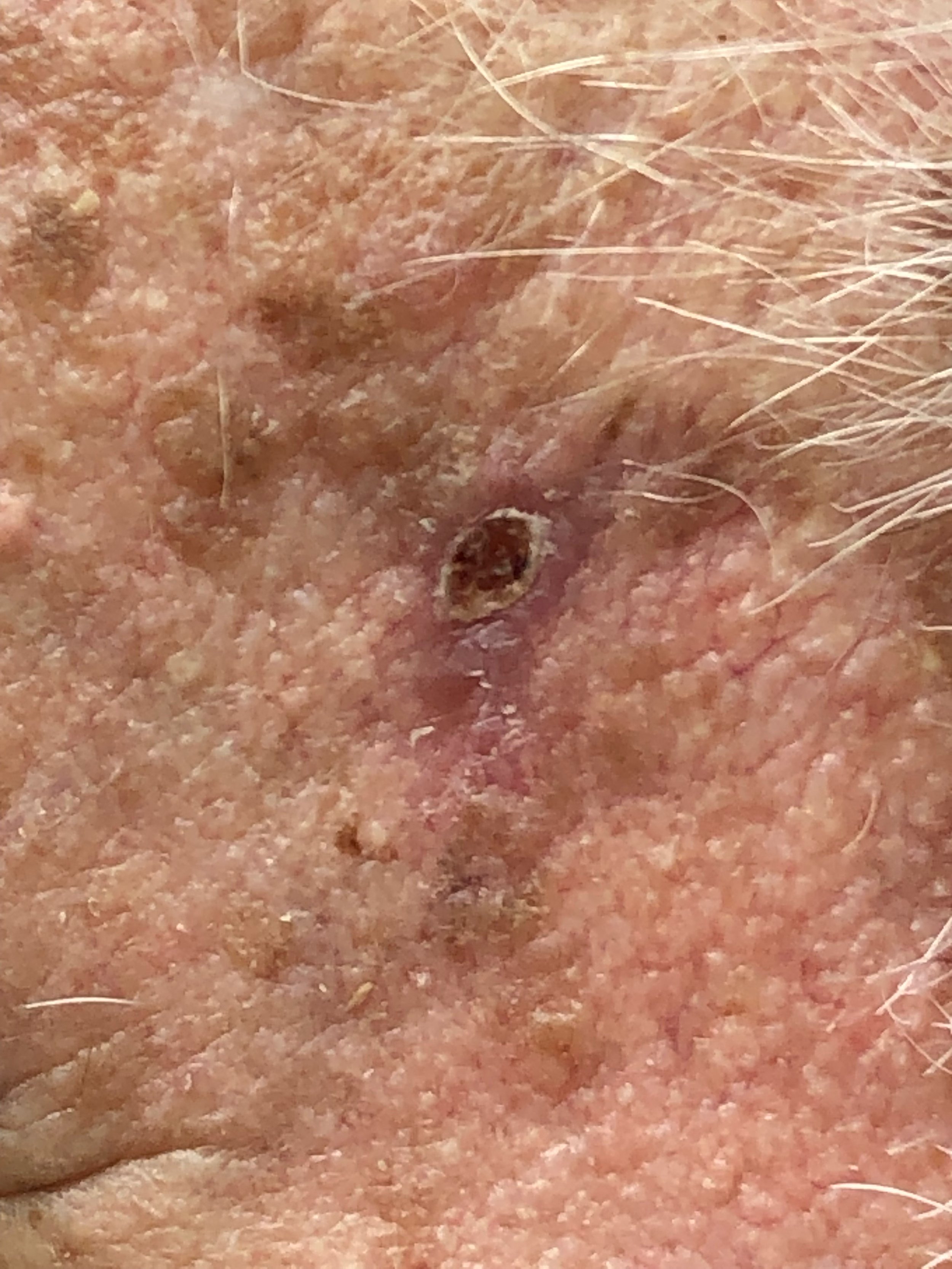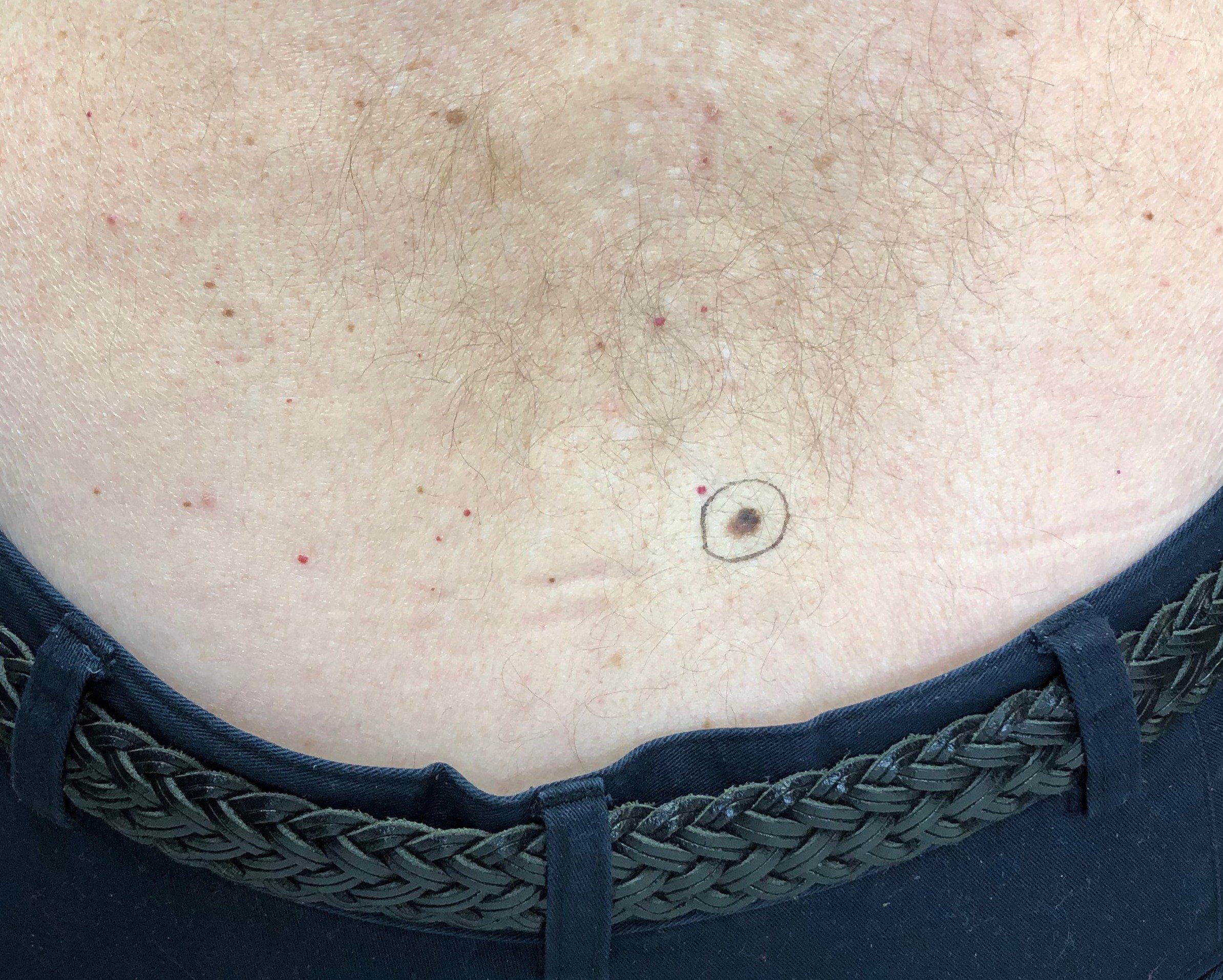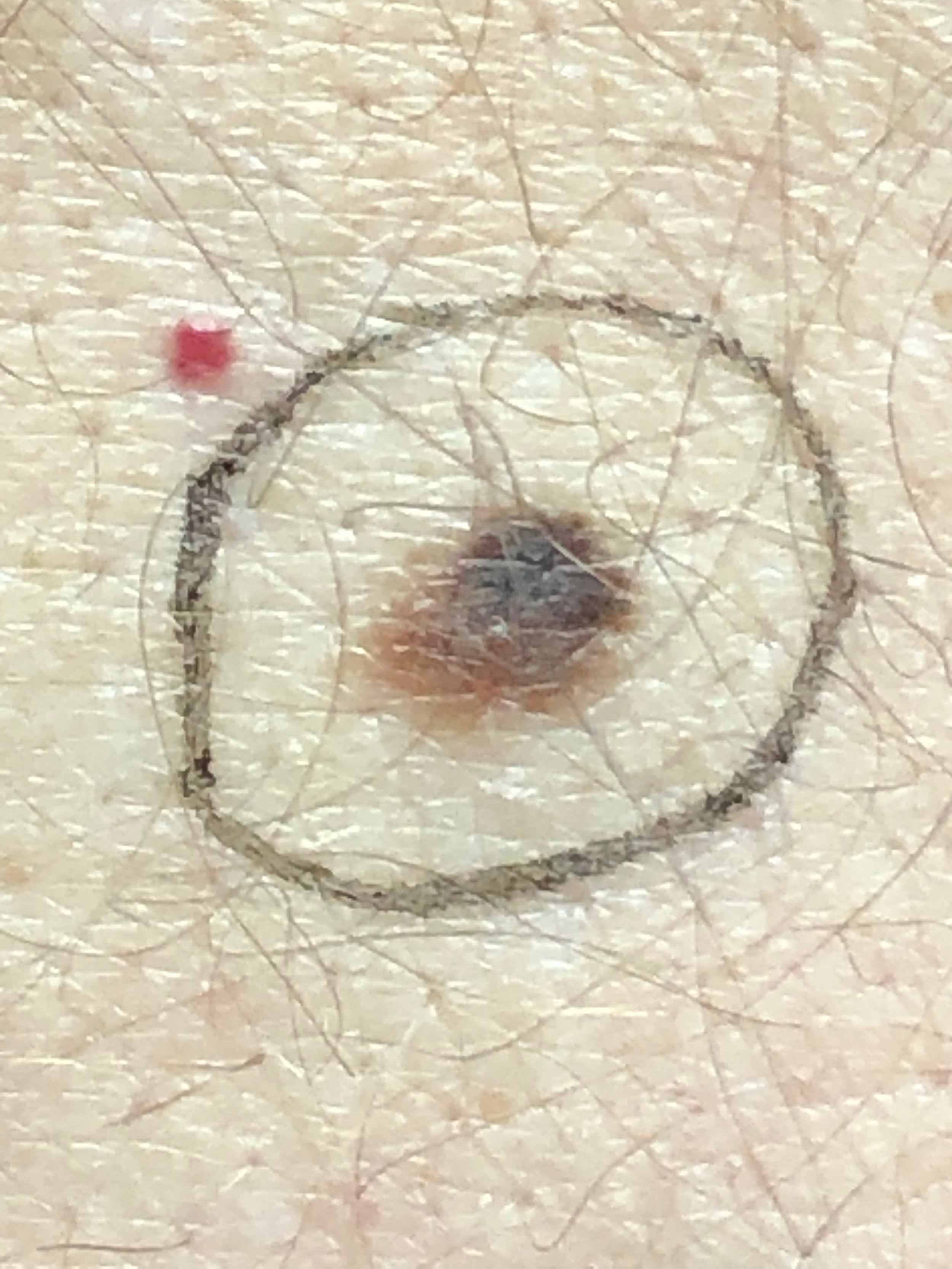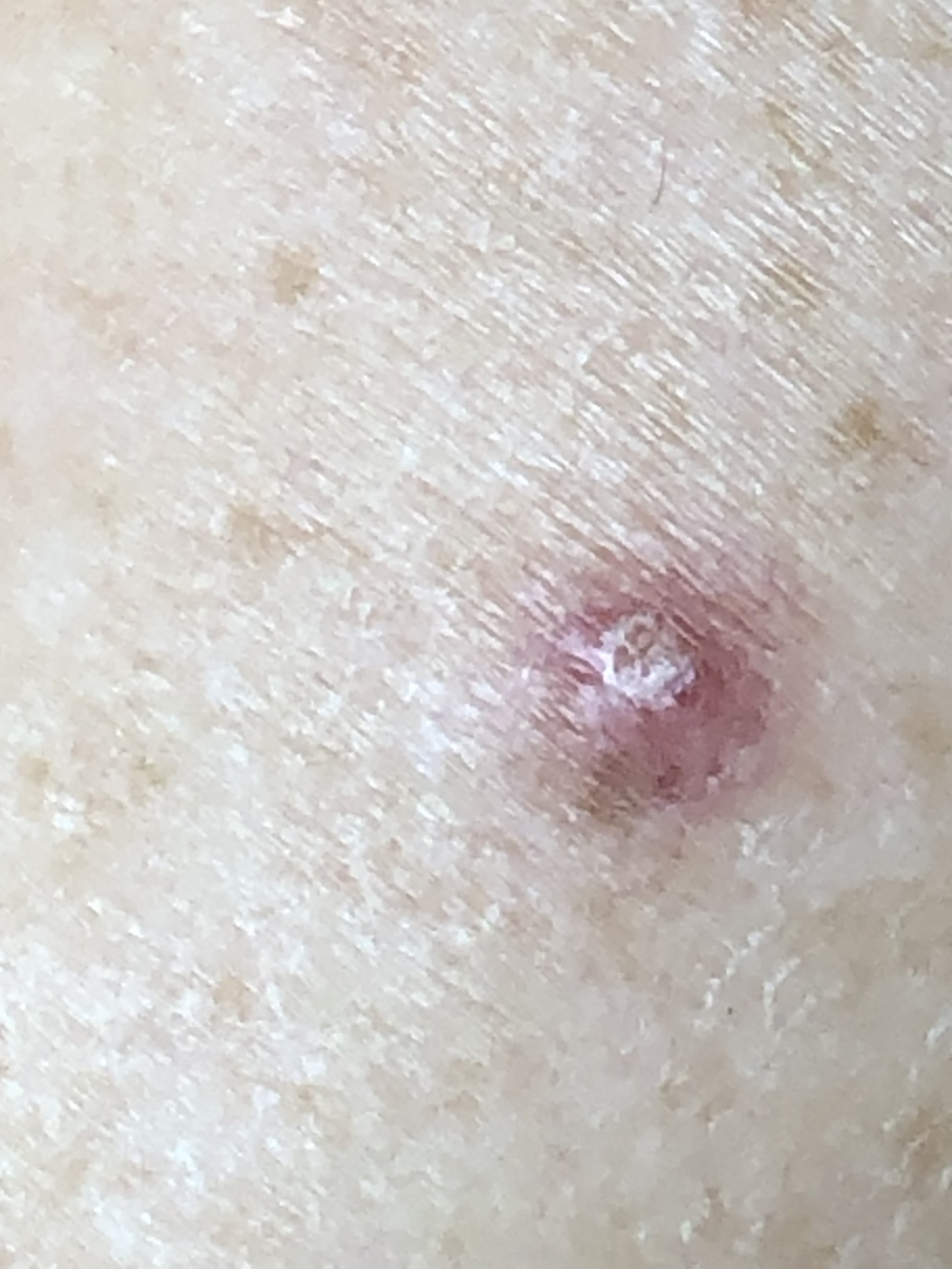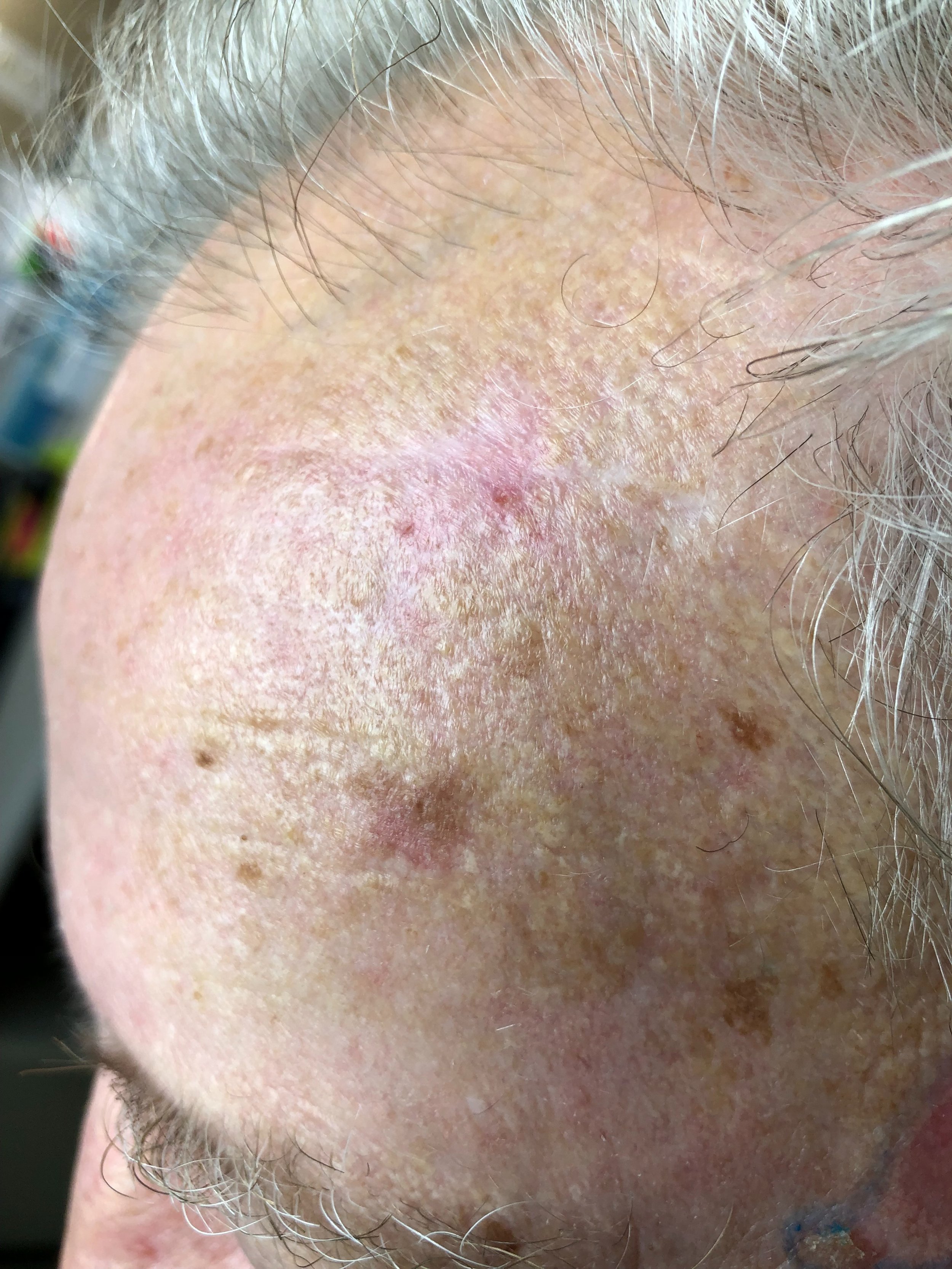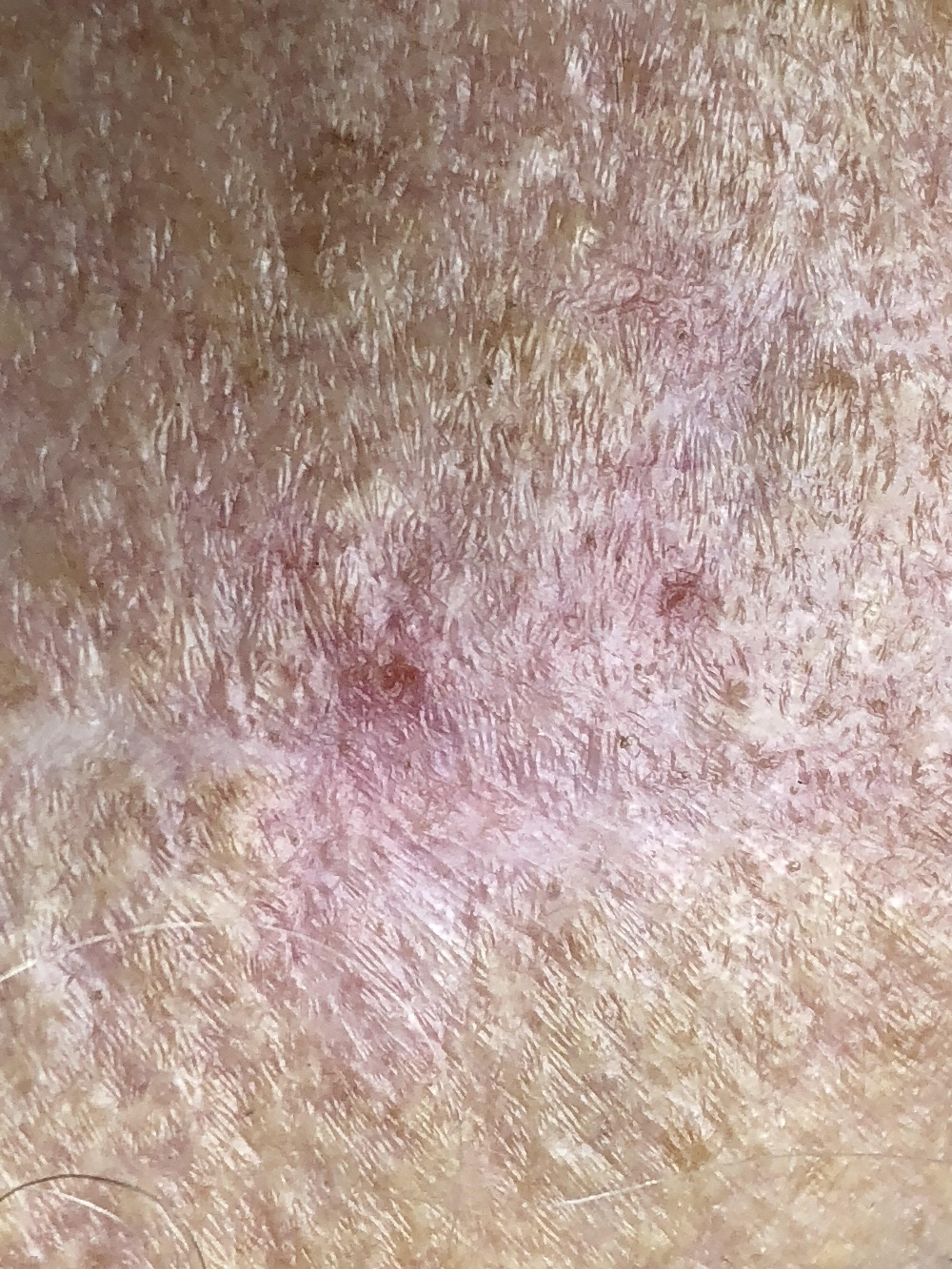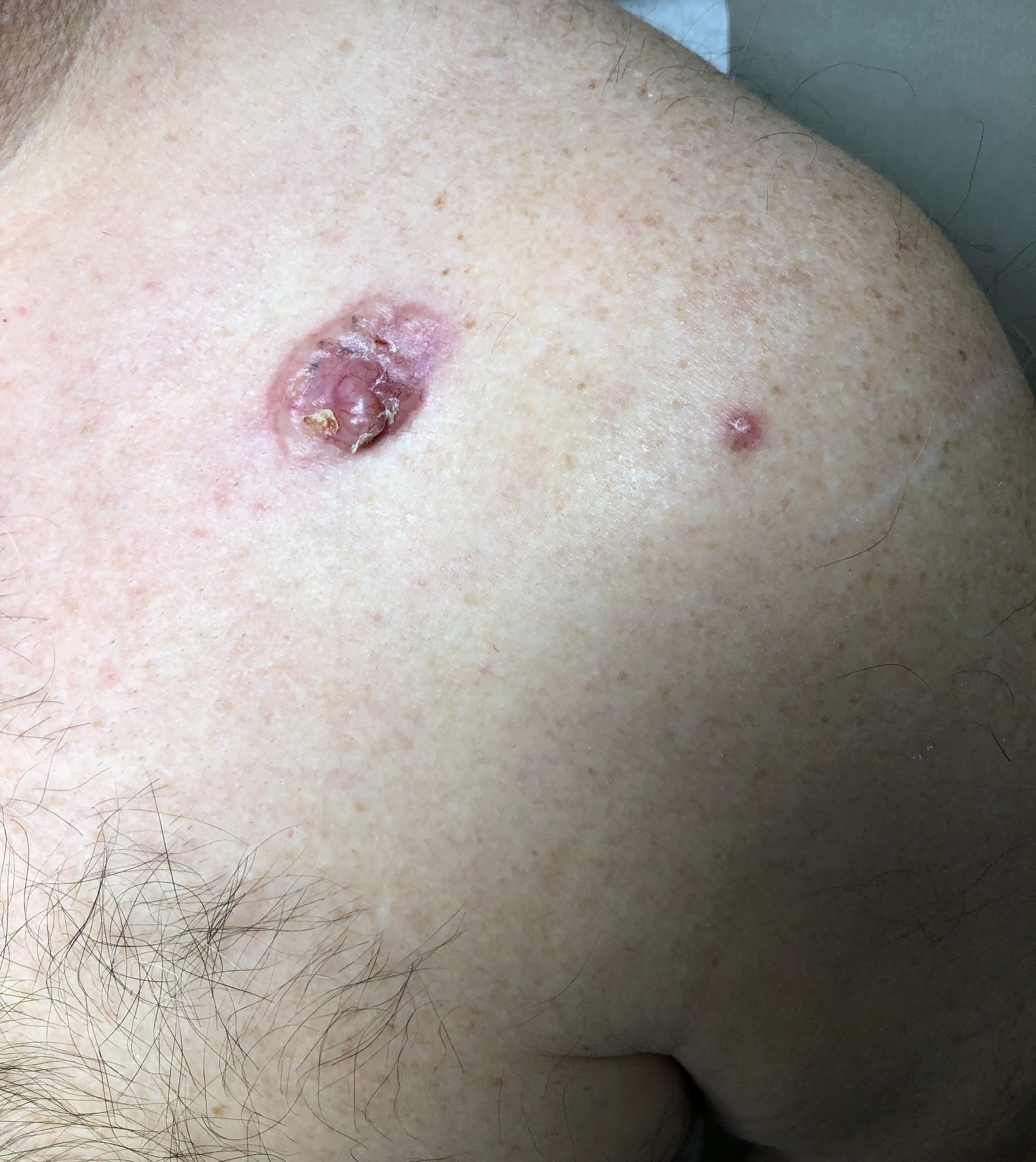Early Detection of Skin Cancer
You may have an early skin cancer if you notice any skin spot that changes in size, shape, color, or begins to bleed. It is important to pay close attention to this early, as it could be a sign of skin cancer. Early detection is the surest way to cure skin cancer. Early detection matters in improving patient outcomes. Performing monthly skin exams on yourself or loved ones is a very helpful way to detect early skin cancer.
Resources on how to perform a self-exam:
https://www.aad.org/public/diseases/skin-cancer/find/check-skin
https://www.skincancer.org/early-detection/self-exams/
General features of early skin cancer include (SCCIS Pic 1.2, 2.2, 3.2; BCC Pics 6.1, 6.2, 6.3; BCC Pic 10.2; MIS pic 1.1, 1.2):
A new growth
A sore or “pimple” that doesn’t heal
A small smooth, shiny, waxy bump
A bleeding, crusty, red patch
A pigmented area that is larger in diameter than a pencil eraser, is deeply black or uneven in color, and has an irregular border.
General descriptions for Basal Cell Carcinomas:
Early form: Pink translucent pearly papule. Sometimes a waxy flesh-colored spot (BCC 15.3, 14.1, 14.2)
Developed: Pink pearly bump with ulceration or scab (BCC 15.1).
BCC 15.1
Locations: Sun-exposed areas. The nose is the most common location for basal cell carcinoma but also commonly occurs over other parts of the head such as the cheeks, as well as the neck and trunk of the body.
If you or your loved one notices any of these features or changes, it is prudent to have the spot evaluated by a board-certified dermatologist, like those at CheckMySpot, to determine if you have developed skin cancer.


